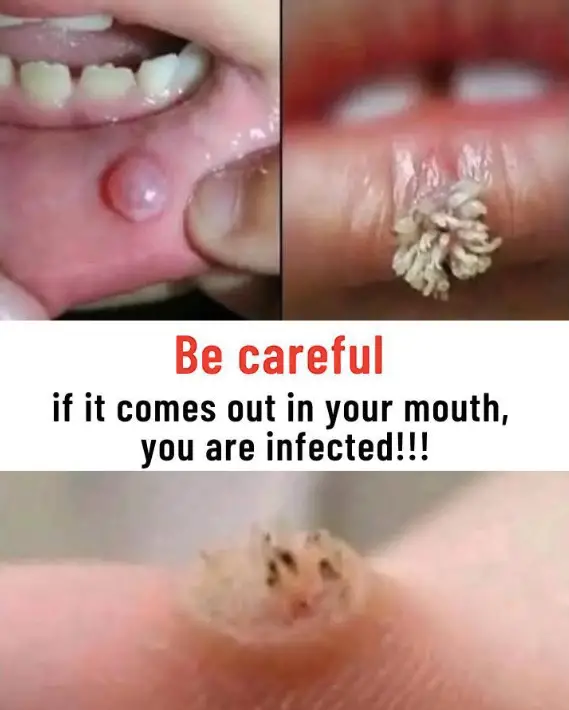
Introduction
Cold sores, also known as fever blisters, are a common and often recurring viral condition caused mainly by the herpes simplex virus type 1 (HSV-1). Though generally considered a minor skin infection, cold sores can reveal much about the body’s immune responses and overall health. More interestingly, recent research suggests that chronic oral infections may even play a role in the development of neurodegenerative diseases such as Alzheimer’s. This article explores the causes, symptoms, treatments, and prevention of cold sores and examines emerging studies that link oral health to cognitive decline.
What Are Cold Sores?
Cold sores are small, fluid-filled blisters that usually appear on or around the lips, although they can also affect the nose, chin, or inside the mouth. They are caused by herpes simplex virus type 1 (HSV-1), which remains dormant in the body and can reactivate at any time.
While cold sores are typically harmless, they are highly contagious and can cause discomfort, embarrassment, and complications if not managed properly.
Causes of Cold Sores
The primary cause of cold sores is infection with HSV-1, though HSV-2 can also be responsible, particularly through oral-genital contact. Once a person is infected, the virus remains in the body for life, lying dormant in nerve cells and reactivating under certain conditions.
Modes of Transmission
Direct Contact: Kissing, or sharing drinks, food, or utensils with someone who has an active sore.
Indirect Contact: Using contaminated items like towels, razors, lip balm, or cutlery.
Self-Infection (Autoinoculation): Touching a sore and then touching another part of the body, such as the eyes or genitals.
Recognizing the Symptoms of a Cold Sore Outbreak
Cold sores usually go through several recognizable stages:
Tingling or Itching: A burning or tingling sensation on the lips or surrounding area, often 1–2 days before the sore appears.
Blister Formation: Small, painful, fluid-filled blisters appear near the affected area.
Blister Rupture: The blisters burst and form shallow, open sores that are highly contagious.
Scabbing and Healing: The sores dry out, form a crust, and heal within 7 to 10 days.
What Triggers Cold Sore Outbreaks?
Reactivation of the HSV-1 virus can be triggered by various internal and external factors, including:
Emotional or physical stress
Illness (e.g., colds or fever)
Menstruation or hormonal changes
Sun exposure or UV light
Fatigue or lack of sleep
Weakened immune system
Cold Sore Treatment Options
There is no permanent cure for HSV-1, but treatment can shorten the duration and severity of symptoms.
Medical Treatments
Antiviral Pills: Medications like acyclovir, valacyclovir, or famciclovir are most effective when taken early.
Topical Antiviral Creams: Help reduce viral activity and ease discomfort.
Pain Relievers: Over-the-counter medications such as ibuprofen or acetaminophen can alleviate pain.
Soothing Creams and Balms: Lip balms and skin protectants can help moisturize and promote healing.
Preventing Cold Sore Transmission and Outbreaks
To minimize outbreaks and reduce the risk of spreading the virus:
Avoid close contact with others during an active outbreak.
Do not share personal items like lip balm, razors, or towels.
Use sunscreen on lips if sun exposure is a known trigger.
Manage stress and maintain a strong immune system through proper diet, sleep, and exercise.
When to See a Doctor
Consult a healthcare provider if:
Outbreaks occur frequently or are unusually severe
Cold sores spread beyond the typical areas (e.g., to eyes or genitals)
Sores last more than two weeks
You have a compromised immune system
Over-the-counter remedies are not effective
The Link Between Oral Infections and Alzheimer’s Disease
While cold sores themselves are not directly linked to Alzheimer’s, there is growing evidence that oral infections—including gum disease and potentially HSV—may contribute to the development of neurodegenerative diseases.
Recent Research Findings
A 2019 study suggested that Alzheimer’s disease might be partly infectious in origin. Researchers identified a toxic enzyme called gingipain, produced by the bacteria Porphyromonas gingivalis (a key pathogen in gum disease), in the brains of individuals with Alzheimer’s symptoms.
They also found that:
These toxic enzymes were associated with known Alzheimer’s biomarkers such as tau and ubiquitin proteins.
Gingipain antigens were present even in people who had not been diagnosed with Alzheimer’s but had early signs of the disease.
Experimental treatment in mice using a compound called COR388 (now known as atuzaginstat) reduced brain inflammation and the buildup of amyloid-beta, a hallmark of Alzheimer’s.
What Does This Mean for the Public?
While cold sores and gum disease are different conditions, both highlight how oral infections and immune responses may play a broader role in systemic diseases, including cognitive decline. Ongoing research is investigating whether managing oral pathogens early—through improved dental hygiene, antiviral treatments, or antimicrobial therapies—could help reduce the risk or progression of Alzheimer’s disease.
Conclusion
Cold sores may seem like a small and isolated health issue, but they are part of a much larger picture. These recurring viral infections offer insight into how pathogens interact with the immune system, and emerging research suggests that oral health may play a surprisingly important role in brain health. While there is still much to learn, maintaining good oral hygiene and managing infections like HSV-1 are important not just for comfort and cosmetic reasons, but possibly for long-term cognitive well-being as well.




